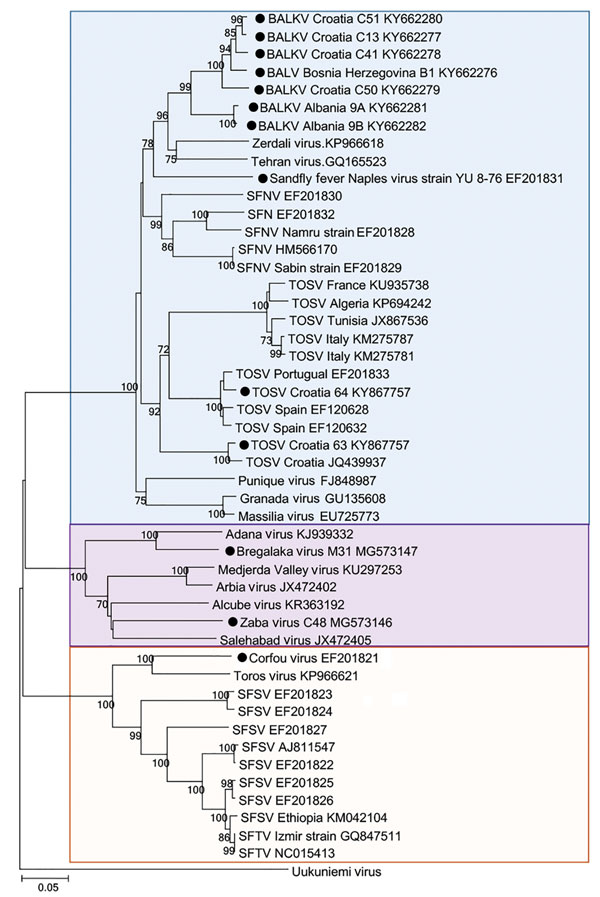Volume 24, Number 12—December 2018
Historical Review
Emergent Sand Fly–Borne Phleboviruses in the Balkan Region
Figure 1

Figure 1. Phylogenetic relationships between sand fly–borne phleboviruses in the Old World based on 589 nt partial nucleoprotein sequence. Phylogenetic tree was constructed using the neighbor-joining method with MEGA software version 6 (http://www.megasoftware.net). Black circles indicate viruses identified in the Balkan region. Boxes (top to bottom) include all viruses belonging to the Sandfly fever Naples virus species, viruses belonging to the Salehabad phlebovirus species, viruses belonging to the Sandfly fever Sicilian and Corfou tentative virus species. The robustness of each node was tested by 1,000 bootstrap replicates. GenBank accession numbers are provided. Scale bar indicates nucleotide substitutions per site.
Page created: November 19, 2018
Page updated: November 19, 2018
Page reviewed: November 19, 2018
The conclusions, findings, and opinions expressed by authors contributing to this journal do not necessarily reflect the official position of the U.S. Department of Health and Human Services, the Public Health Service, the Centers for Disease Control and Prevention, or the authors' affiliated institutions. Use of trade names is for identification only and does not imply endorsement by any of the groups named above.